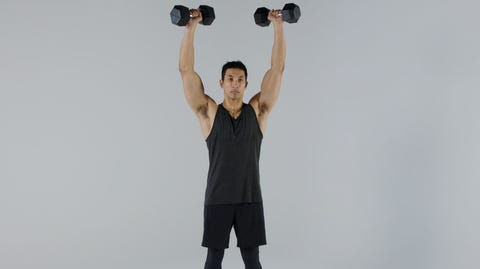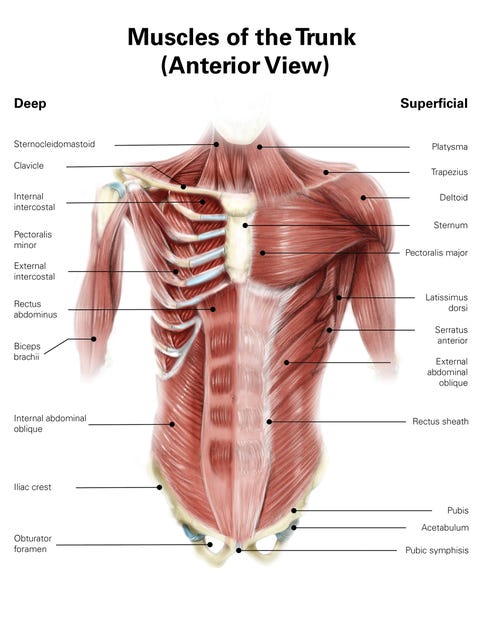
This is Your Quick Training Tip, a chance to learn how to work smarter in just a few moments so you can get right to your workout.
If you’re a casual lifter, you probably know all about stacking a workout with biceps curls and triceps extensions to build up your arm muscles. You’ve likely embraced the biggest weight room commandment and you never skip leg day, even moving beyond the standard squats to include moves like hip thrusts to target the biggest muscle in your body, the glutes. You might even know that situps alone aren’t the best way to build up your six-pack—there’s a lot more to a strong-looking core than just the rectus abdominis (even if you don’t know the exact name of the muscle).
But once you move beyond casual status, you’ll start to zero in on some of the other muscles in your body that will help to make up a killer physique, like the brachialis, the vastus medialis, and perhaps the most overlooked yet aesthetically pleasing muscle of all, the serratus anterior.
The serratus anterior isn’t a huge muscle, especially given the outsized impact a well-developed one can have on your overall physique. This is the type of physical feature that catches the eye, and makes it clear to the beholder that the subject of their gaze has put in the hours needed to be strong and fit. The muscle isn’t one you’ll always be able to spot, either; you’ll only be able to show off the serratus anterior if you pop your top and take your shirt off. That said, there are plenty of benefits to training it than just achieving a goal physique.
What Is the Serratus Anterior Muscle?
If you’ve ever witnessed a bodybuilder strike the classic “front lat spread” pose (standing tall with a puffed chest and fists on hips), you’ve seen the serratus anterior (SA) rippling just below the armpits. Located on either side of the ribcage, the muscle has a serrated appearance (hence its name), and on particularly chiseled bodies, it resembles a set of fingers squeezing either side of the upper torso.

The primary function of the SA is to protract (i.e. pull forward) the scapula, like when you’re throwing a punch (that’s why it’s also referred to as the “boxer’s muscle”). The muscle also plays a key role in the upward rotation of the scapula, such as when you raise a weight in front of you or press it overhead, and in the elevation of the ribcage when you breathe.
And because it helps stabilize the scapula during arm movements, strengthening it can help reduce your risk of injury—especially in your shoulders.
How to Train the Serratus Anterior
Start giving the SA the attention it deserves in your workouts by performing moves that call it into action, such as the scapular pushup, the scapular pullup, punches, and any overhead pressing movement.
Need some more inspiration? Check out the six best serratus exercises:
●Dumbbell Punch
●Band Chest Press
●Punch/Shadowboxing
●Bear Crawl
●Dead-Stop Pushup
●Plankup
Trevor Thieme is a Los Angeles-based writer and strength coach, and a former fitness editor at Men’s Health. When not helping others get in shape, he splits his time between surfing, skiing, hiking, mountain biking, and trying to keep up with his seven year-old daughter.
Brett Williams, a fitness editor at Men’s Health, is a NASM-CPT certified trainer and former pro football player and tech reporter who splits his workout time between strength and conditioning training, martial arts, and running. You can find his work elsewhere at Mashable, Thrillist, and other outlets.
Advertisement – Continue Reading Below
Advertisement – Continue Reading Below
Note: This article have been indexed to our site. We do not claim legitimacy, ownership or copyright of any of the content above. To see the article at original source Click Here








![[Editorial] The People's Power, the predecessor to the internal conflict... What is 'democracy'? thumbnail](http://img.segye.com/content/image/2021/12/21/20211221518849.jpg)




